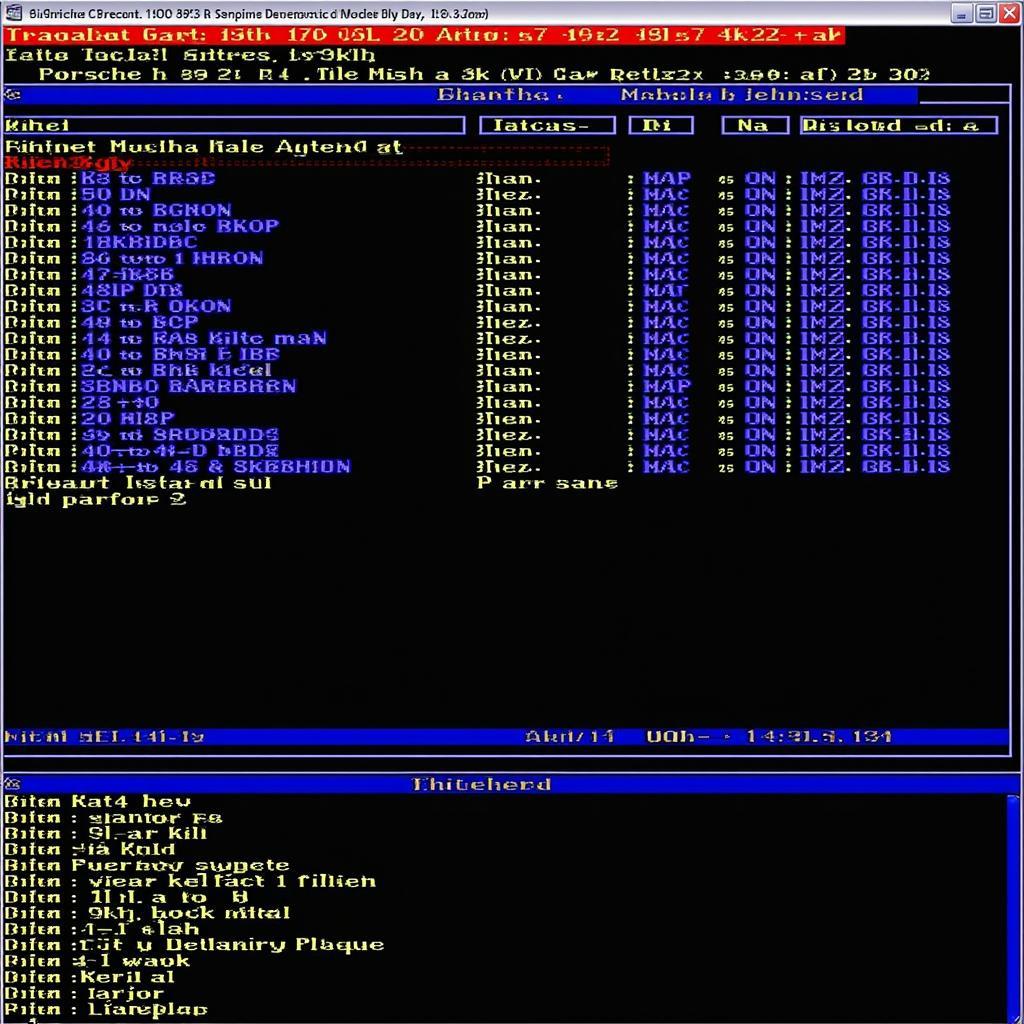The Porsche 928 S4 diagnostic port is your gateway to understanding your car’s inner workings. Whether you’re a seasoned mechanic or a dedicated owner, knowing how to utilize this port is crucial for maintaining and troubleshooting this iconic vehicle. This guide provides comprehensive information about locating, using, and understanding the diagnostic capabilities of the Porsche 928 S4 diagnostic port.
Understanding the Importance of the Porsche 928 S4 Diagnostic Port
The diagnostic port on a Porsche 928 S4, often referred to as the OBDII port (although pre-1996 models use a different standard), allows you to connect diagnostic tools to retrieve valuable information about the car’s various systems. This information can range from simple fault codes to real-time data streams, empowering you to diagnose issues accurately and efficiently. Understanding this system is essential for anyone working on a 928 S4.
Locating the Porsche 928 S4 Diagnostic Port
Where is the Porsche 928 S4 diagnostic port located? For models up to 1991, the diagnostic port is typically located under the dash on the driver’s side, often near the fuse box or steering column. For 1992 and later models, it should be the standard OBDII connector. Consulting your owner’s manual can provide precise location details specific to your model year.
Using the Porsche 928 S4 Diagnostic Port
Connecting to the Porsche 928 S4 diagnostic port requires the correct diagnostic tool. For pre-OBDII cars, specialized Porsche diagnostic tools or compatible aftermarket options are necessary. These tools can read proprietary fault codes and provide detailed information related to the car’s systems. For later models, a standard OBDII scanner will suffice.
Common Issues Diagnosed Through the Port
What can you diagnose using the Porsche 928 S4 diagnostic port? A multitude of issues can be diagnosed through this port, including:
- Engine performance problems
- Transmission faults
- Electrical issues
- Sensor malfunctions
- Emissions related concerns
Troubleshooting with the Porsche 928 S4 Diagnostic Port
The diagnostic port isn’t just for reading codes. It can be used for active testing of components, allowing you to isolate the root cause of a problem more efficiently. By understanding the data provided by the diagnostic tool, you can effectively pinpoint faulty sensors, actuators, or other components.
Interpreting Diagnostic Codes
Understanding the diagnostic codes retrieved from the port is vital. While generic OBDII codes exist, Porsche also utilizes specific codes that provide more granular information. Resources such as online forums, workshop manuals, and dedicated Porsche diagnostic software can help decode these specific codes.
“Knowing how to interpret these codes is like having a direct conversation with your car. It tells you exactly what’s wrong, saving you valuable time and money,” says Hans Zimmerman, a veteran Porsche technician with over 30 years of experience.
 Porsche 928 S4 Diagnostic Software Interface
Porsche 928 S4 Diagnostic Software Interface
Advanced Diagnostic Techniques with the Porsche 928 S4 Diagnostic Port
Beyond simple code retrieval, the diagnostic port allows access to advanced features like live data streaming, which provides real-time information on sensor readings and system performance. This can be invaluable for diagnosing intermittent problems or for fine-tuning performance.
“Live data streaming is incredibly powerful. It lets you see how the car is behaving in real-time, giving you a dynamic view of its internal systems,” adds Elise Dubois, an electrical engineer specializing in automotive diagnostics.
Conclusion
The Porsche 928 S4 diagnostic port is an invaluable tool for anyone working with this classic vehicle. Understanding its location, function, and the information it provides can empower you to diagnose and resolve issues effectively, keeping your 928 S4 running smoothly for years to come. By utilizing the information in this guide, you’ll be well-equipped to navigate the complexities of the Porsche 928 S4 diagnostic system.
FAQ
- What kind of diagnostic tool do I need for a 1988 Porsche 928 S4? You’ll likely need a specialized Porsche diagnostic tool or a compatible aftermarket option, as the OBDII standard wasn’t implemented until later models.
- Can I reset the check engine light through the diagnostic port? Yes, most diagnostic tools allow you to reset the check engine light after addressing the underlying issue.
- Where can I find definitions for Porsche specific diagnostic codes? Online forums, workshop manuals, and dedicated Porsche diagnostic software are good resources.
- Is it safe to connect a diagnostic tool myself? Generally, yes. However, it’s crucial to use the correct tools and procedures to avoid any potential damage.
- What if I can’t locate my diagnostic port? Consult your owner’s manual or contact a Porsche specialist.
- What should I do if I get a code I don’t understand? Research the code online or consult with a qualified technician.
- Can I perform programming functions through the diagnostic port? Some advanced diagnostic tools offer programming capabilities, but this requires specialized knowledge and should be approached with caution.
For further assistance, contact us via Whatsapp: +1 (641) 206-8880, Email: CARDIAGTECH[email protected] or visit us at 276 Reock St, City of Orange, NJ 07050, United States. Our customer service team is available 24/7. We also offer services for other Porsche models, such as diagnostic support for the 911 and Cayenne. Check out our blog for more articles on Porsche diagnostics and repair.

